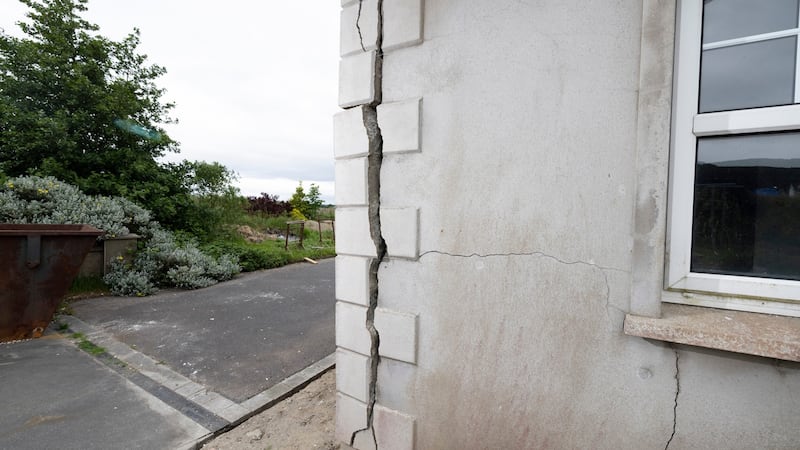The damage done to thousands of houses by crumbling mica bricks and expanding pyrite floors is the stuff of nightmares. Many homeowners see their property disintegrating around them. Now taxpayers face rising costs for rebuilding and repairs as Minister for Housing Darragh O’Brien prepares to boost the public redress scheme.
The question shot to the top of the political agenda during the summer after a big protest in Dublin by homeowners. They want 100 per cent redress, saying the 90 per cent cap in the current aid scheme is unbearable. They have a case. But the burden is huge as engineers increasingly call for the demolition of the severly damaged properties. The problem emerged first in Donegal and Mayo. Now local councils in Clare and Limerick are seeking aid. Similar moves are in prospect in Sligo, Tipperary and, possibly, in Fingal, north Dublin. The State has a central role here, clearly, but it should not bear all the risk.
It is clear already that the solution lies in better building standards and regulation, sharper enforcement and more on-site inspections

Yet industry has turned its back. Insurers insist mica damage is not an insured peril, so is not covered. HomeBond, provider of structural deficit cover on new homes, relies on an exclusion clause for third party and supplier negligence. Builders represented by the Construction Industry Federation say they have “no part” in the mess and the Irish Concrete Federation says the overwhelming majority of members are “not directly involved”. The argument goes that poor regulation is to blame, thus the State must pay. Not good enough. Mica remediation costs are likely to exceed €1.5 billion, far outweighing pyrite works which have cost some €166 million. To date, however, the Government has recouped only about €4.2 million from builders, developers and quarries, a paltry sum. As the Minister finalises his mica plan, he must seek an appreciable contribution from industry and compel payment if it is not forthcoming.
Such a move is being examined by a review group which makes recommendations soon. It has also been asked to consider whether banks and funds which hold mortgages over mica homes should help. That idea has merit, for lenders have an interest in resolving mica damage. After all, security over a collapsing home is not much good to a lender. Although business levies were ruled out on constitutional grounds when confronting the pyrite problem, O’Brien has signalled his determination to pursue them. He should explore every avenue.
The review group is also considering whether there should be a public inquiry. That potentially costly step seems unnecessary. It is clear already that the solution lies in better building standards and regulation, sharper enforcement and more on-site inspections. The suppliers of defective bricks and pyrite must also be held to account.









